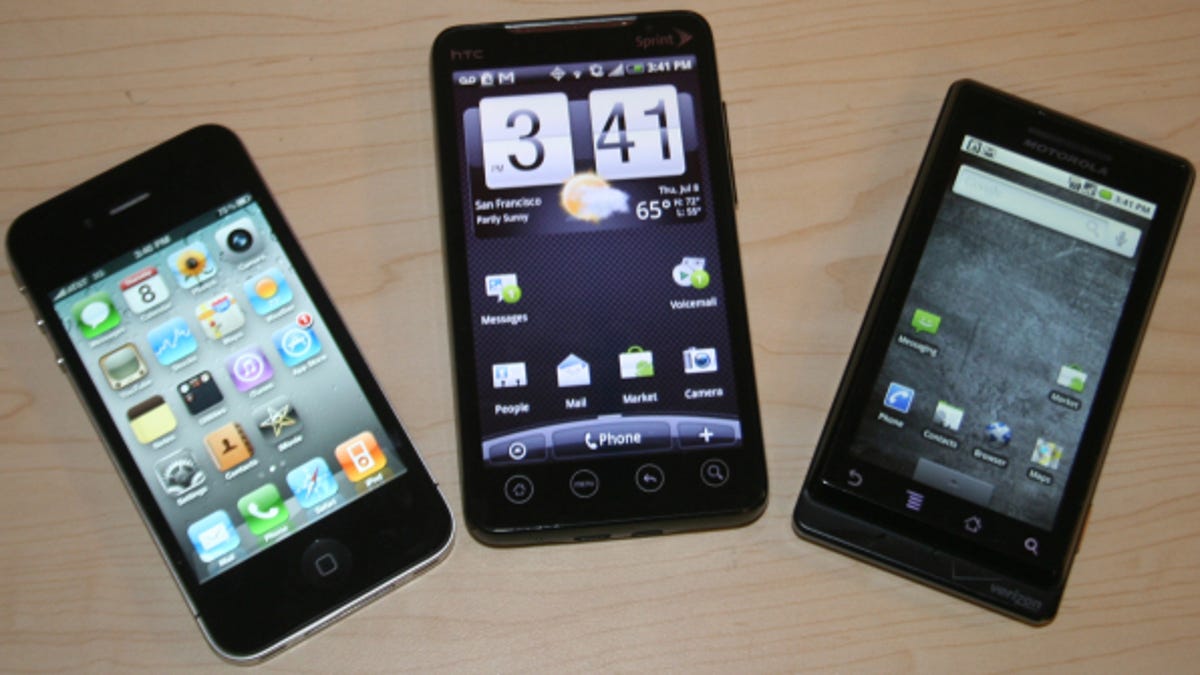Is the iPhone's screen too small?
With new Android phones arriving with larger screen sizes, some CNET readers think Apple should go bigger with its next iPhone.

Since I posted an article about the features I wanted to see in the next-generation iPhone, I've received several e-mails from readers calling me out for not including a larger screen as one of the 20 feature upgrades. Most readers were polite but mildly indignant. Here's what two Texans wrote me--Larry from Austin and Mike from Houston:
Larry: You didn't mention at all a larger display or screen! You may not want a bigger display, but I do and I am sure there are lots of others too. Why can't Apple come out at least w/a slightly larger screen, i.e. 3.7" or 4"? The HTC Google/Nexus Phone has a 3.7" screen but yet the phone is still basically the same size as the iPhone. The new Samsung Galaxy S phones that are hitting all four U.S. major networks this month and the next month have 4" screens but yet the phones themselves are pretty much the same size [as the iPhone 4]...
Mike: What, a bigger screen didn't make the top 20??!?!?!? That's the main reason I didn't buy the iPhone 4. Yes, my eyes are getting bad so I need the bigger screen...and every new phone coming out now has at least 4" screens...Droid X, Samsung Galaxy S, EVO. I tried out the EVO for 2 weeks and loved it...unfortunately I have 5 people on my AT&T account. Tough to switch.
Of course, they want everything bigger in Texas (or at least they say everything is bigger there), but I gotta say, I haven't experienced a desire to inflate my iPhone's screen size. That said, these e-mails got me thinking more about smartphone screens and I reread CNET editor Eric Franklin's article that tests and compares the screen performance of the iPhone 4, the HTC Evo, and the Motorola Droid. In his shootout, he gave the nod to the iPhone 4; the Evo came in a close second, and the Droid followed up in third. However, Franklin focused more on image quality and less with the actual size of the screen.
Personally, I really like the Evo, built-in kickstand and all, but I find that as a phone it's a tad bulky. I also think the same of the Droid and new Droid X. CNET's smartphone guru Bonnie Cha has a couple new Samsung Galaxy S models sitting on her desk--AT&T calls its Galaxy S phone the Captivate, and T-Mobile has the Vibrant--that I've played around with it a bit and like the design and agree with Larry's assessment that the phone is "basically the same size as the iPhone." In fact, it's a little scary how close the Vibrant resembles a slightly trimmer version of the iPhone 3GS.
As for specs, the Galaxy S "family" has a 4-inch Super AMOLED screen that's 800x480 pixels. The iPhone's 3.5-inch Retina Display offers a 960x640-pixel resolution. We measured the two screens and calculated that the Galaxy S's display offers 17 percent more overall screen area. Compare the 4.2-inch Evo's or 4.3-inch Droid X's screen with the iPhone's and you're looking at upwards of 20 percent.
So why are other smartphone manufacturers going bigger--and is it better? Well, the most obvious answer is that the phones now have a design feature that distinguishes them from the iPhone. Other factors may include the availability and pricing of LCD screens in certain screen sizes. And finally, you simply don't have a single entity tightly controlling the specs for the product. Whereas Android initially had a smaller screen size with a lower resolution, it now supports multiple screen sizes and resolutions. In other words, given some flexibility, manufacturers are offering some screen diversity, though it does seem like most of the high-profile Android phones have screens that are larger than the iPhone's.
Going bigger does have its advantages. Often, people talk about how the larger screen is better for video and images, even if it's hard to argue with how good images look on Apple's "smaller" display. And some find a roomier virtual keyboard easier to type on. On the downside, larger, high-resolution displays tend to require more power and suck more battery life. And some of these larger screen phones simply weigh more and take up more room in your pocket. The Evo, for example, weighs 1.3 ounces more than the iPhone 4 (6.1 ounces versus 4.8 ounces). Not a huge difference, but as a percentage of overall weight it's significant.
What should the optimal screen size be? That I can't tell you, but I'm OK with the iPhone's 3.5-inch screen and expect that Apple will stick with this chassis for another generation, antenna tweaks aside. I still think there's a better chance we'll see a mini iPad with a 6- or 7-inch screen before we see an iPhone with a 4 or 4.2-inch screen. So yes, though there are some folks like Larry and Mike who want an iPhone with a larger screen, I know just as many people who aren't buying the Evo because they think it's too big. To each his own, I guess.
What do you think?
Editors' note: Technically, the iPhone's screen is slightly larger than the 3.5-inches diagonal that Apple advertises.
Related: Smartphones face off, screen to screen
See also: iPhone 5's 20 most-wanted features

